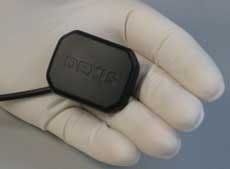X Files #10 — Sensors and (investment) sensibility
For more on this topic, go to www.dentaleconomics.com and search using the following key words: X–ray sensors, technology, digital imaging, investment, Dr. Terry L. Myers.
The addition of a new sensor in our office started me thinking about all of the different heroes that keep my practice growing economically and technologically. This month's spotlight shines on the research and development gurus who keep tweaking already good products to make them truly remarkable. A few weeks ago, we acquired the new DEXIS® Platinum sensor, and it already has made a notable difference in our imaging results.
Since my assistants have a lot of experience with the Classic DEXIS sensor and were eager to try the new Platinum, I surveyed them for their first impressions. They immediately noticed the enhanced image clarity, as did I. While the company relates this to PureImage™ technology and the sensor's ability to generate 16,000 shades of gray, as a clinician, it's what's on the monitor that counts.
Besides the clarity, I appreciate the new 2.2 megapixel size that enables me to enlarge the image on a larger monitor without losing clarity and without the edges of the image becoming fuzzy. This is especially helpful when we are trying to detect interproximal decay that has broken through the enamel to the dentin. With these capabilities, we can really see the distinction.
Physically, the Platinum is convenient and quick. The assistants like the direct USB connectivity. They can easily transfer the sensor between operatories. Direct USB means there is literally nothing between the sensor and the USB plug — no docking stations or controllers that may not be large, but still need to be hauled around and maintained.
What the company calls “plug 'n ray” eliminates these issues. The color coding of the holders is another physical aspect of the sensor that the assistants really liked because this makes it easier for them to quickly find exactly which pieces they need. For example, periapical or bitewing X–rays are differentiated by colors on the rings and biteblocks. This is just another time–saving benefit.
As for patient benefits, the assistants noticed that the Platinum sensor is a little slimmer and sleeker, and corners are more contoured and rounded. Any additional comfort that we can offer patients is greatly appreciated by them and us.
Since an X–ray sensor is such a small accessory, why all the fanfare? And why, when budgets are tight, should we invest in a new sensor or upgrade from a sensor that is already quite good? My answer is because Platinum is a practice builder. The greater clarity and detail that I am armed with, the better opportunity
I have for more targeted diagnosis and treatment planning. When the patient has a clearer understanding of his or her dental issues (that the patient sees displayed on my rather large computer monitor), the more chance he or she will accept treatment, sooner. An added plus is that the sensor maintains clarity across a range of radiation settings, meaning we can lower the patient's radiation exposure. With continued emphasis on the environment and patient health, there's a big push for reducing exposure to radiation.
When writing a column about technology, I think about how small changes around the office can create big results. With X–rays being such a large and important part of any dental practice, speeding up the process and improving the efficiency not only makes our jobs so much easier, but gives us more time in the day to spend time with patients, add new patients, or just give our staff a break. Research and development people who bring products like Platinum to the dental market give all of us a chance to shine!
Dr. Terry L. Myers is a fellow in the Academy of General Dentistry, and a member of the Academy of Cosmetic Dentistry and the Dental Sleep Disorder Society. He has a private practice in Belton, Mo. Contact Dr. Myers by e–mail at office@keystone–dentistry.com.

